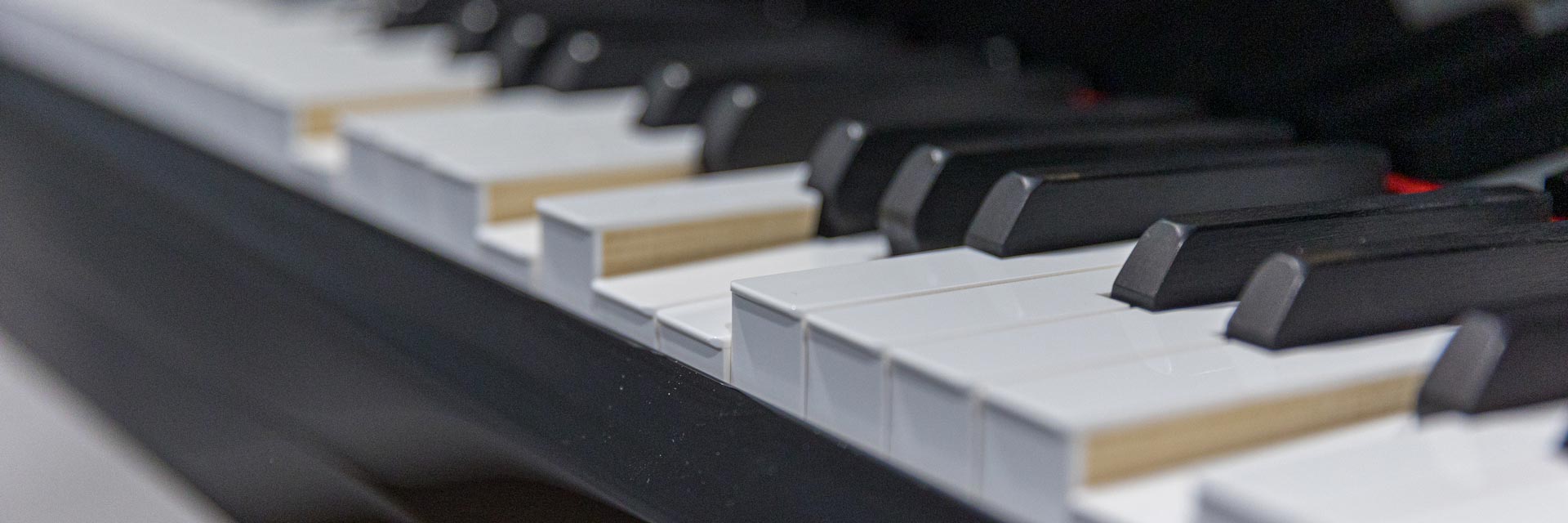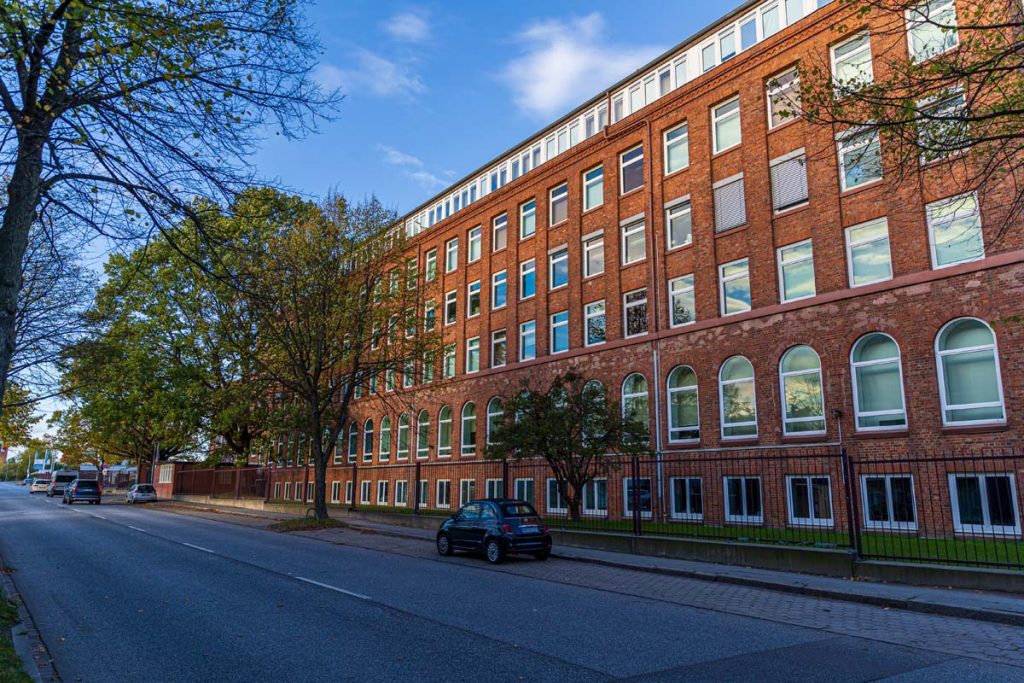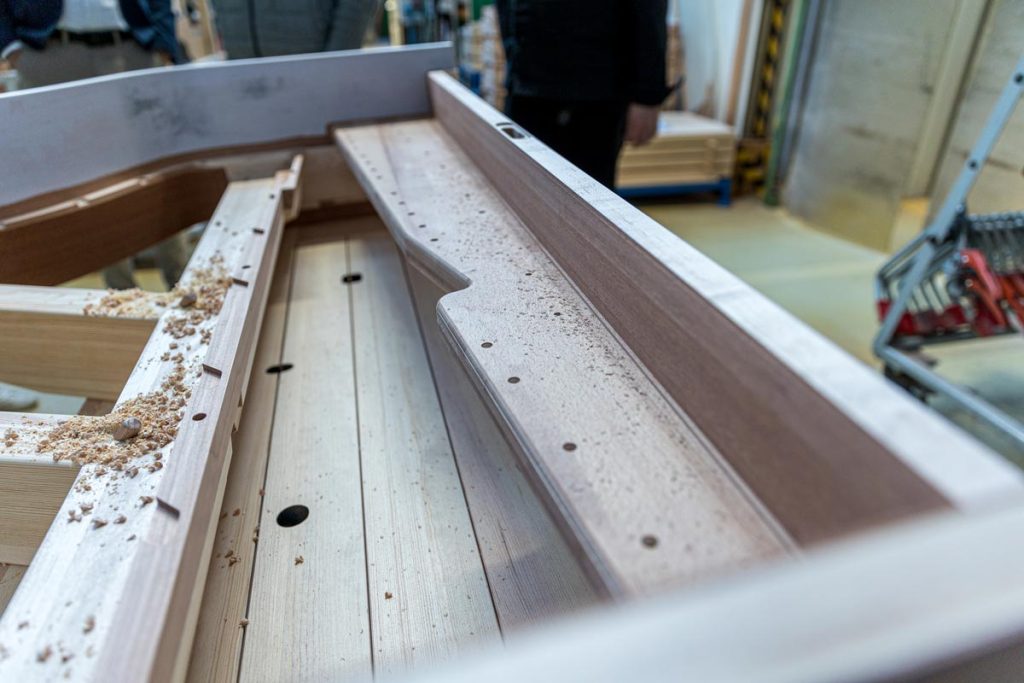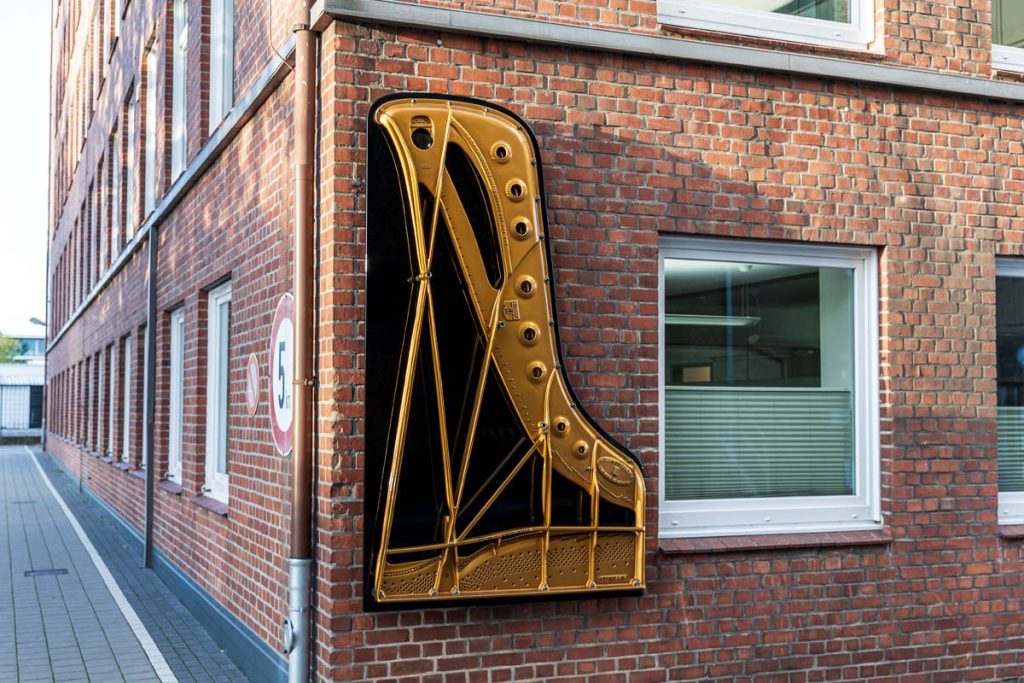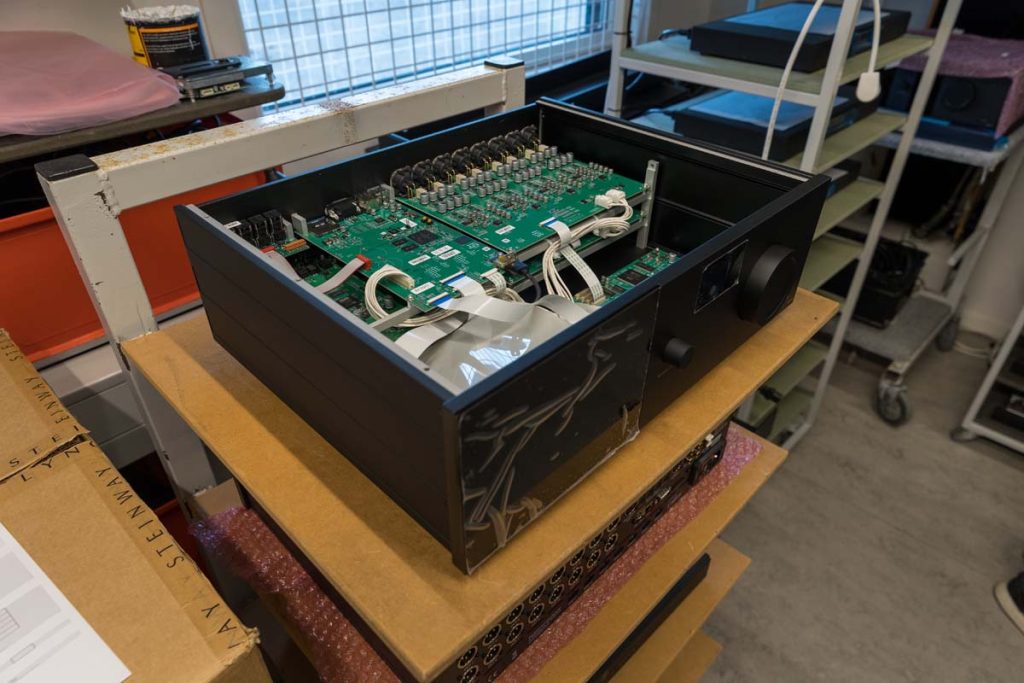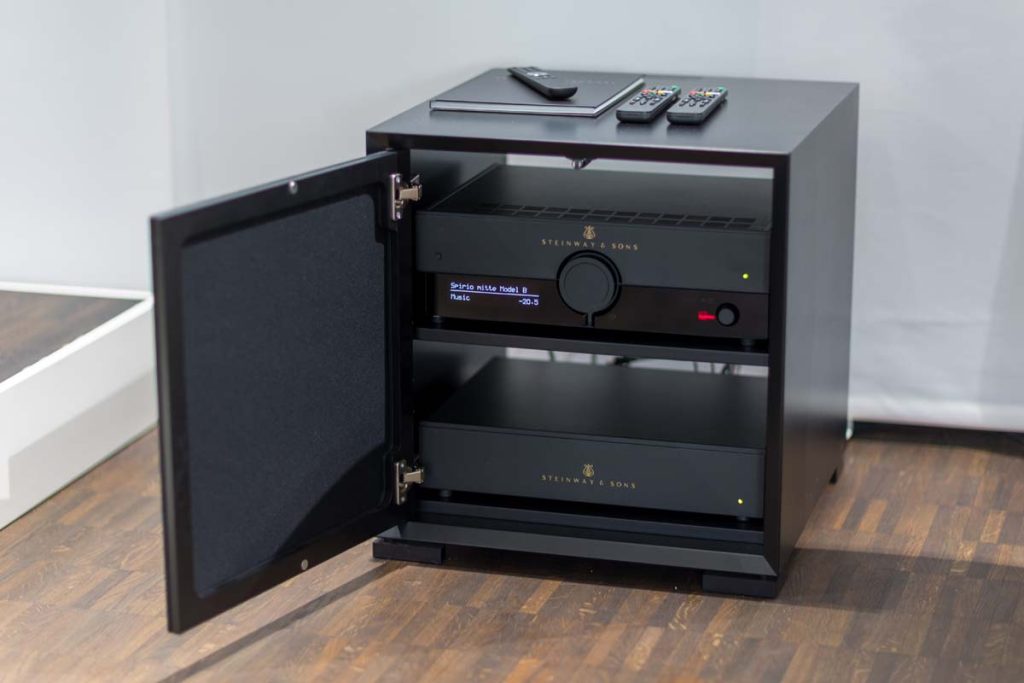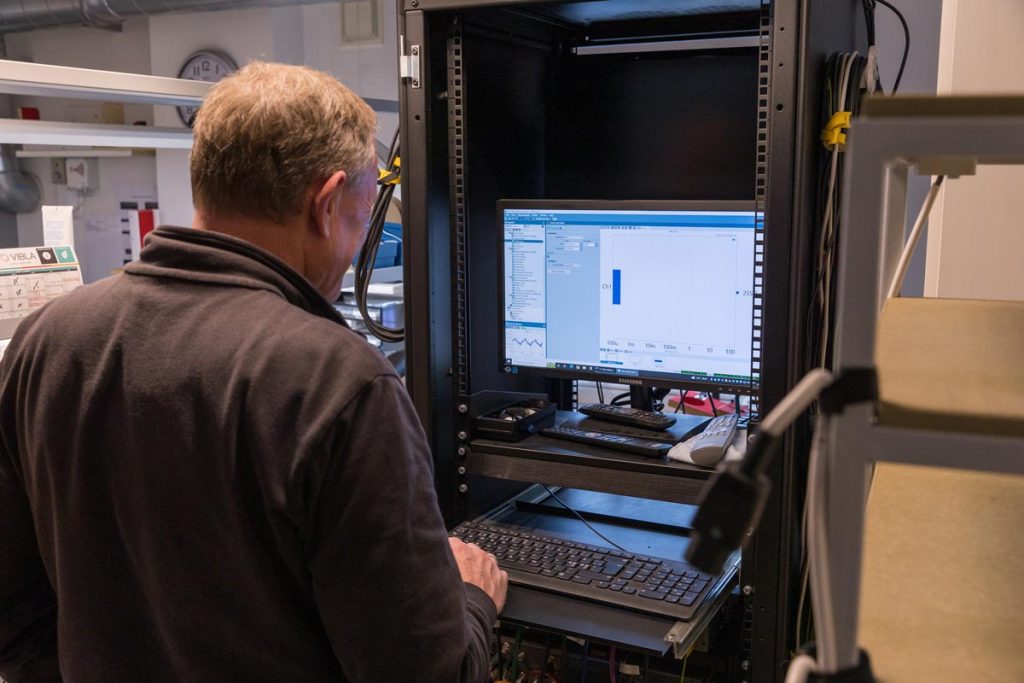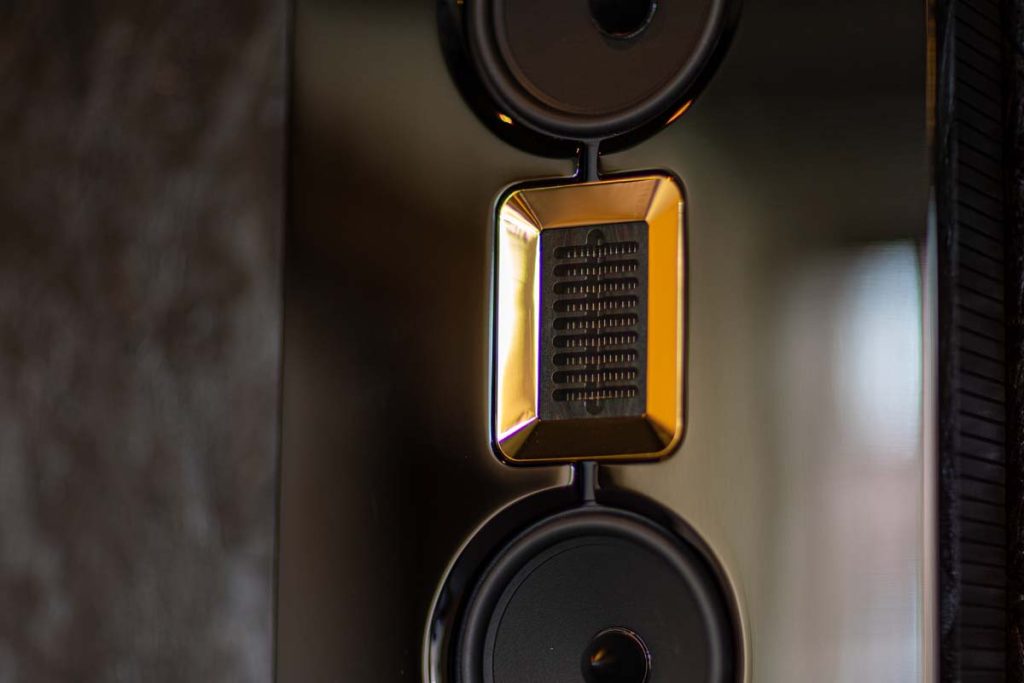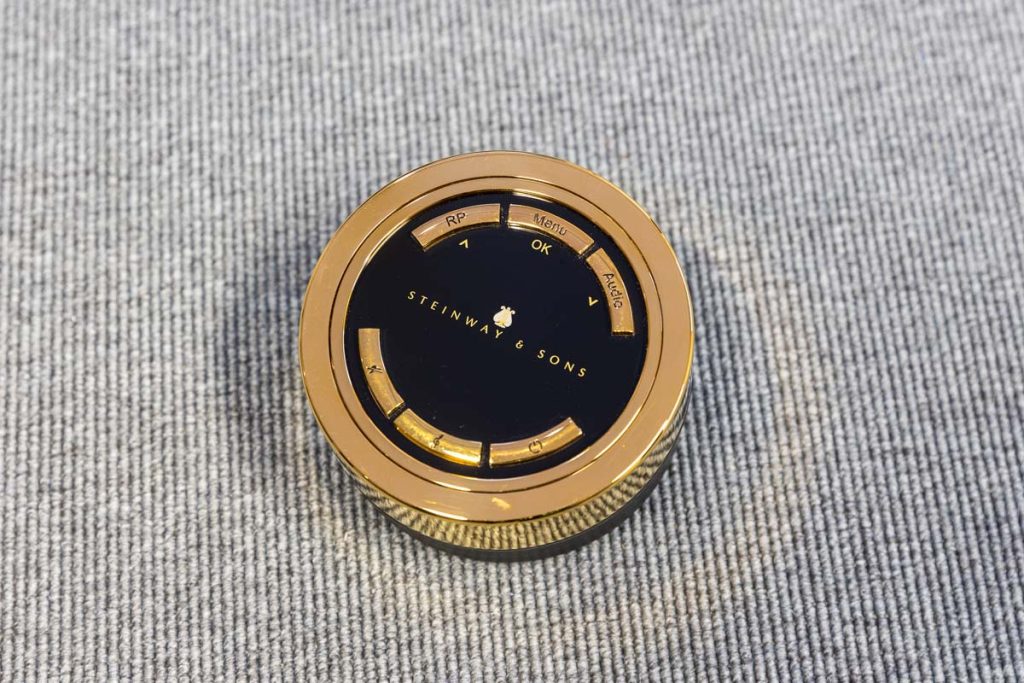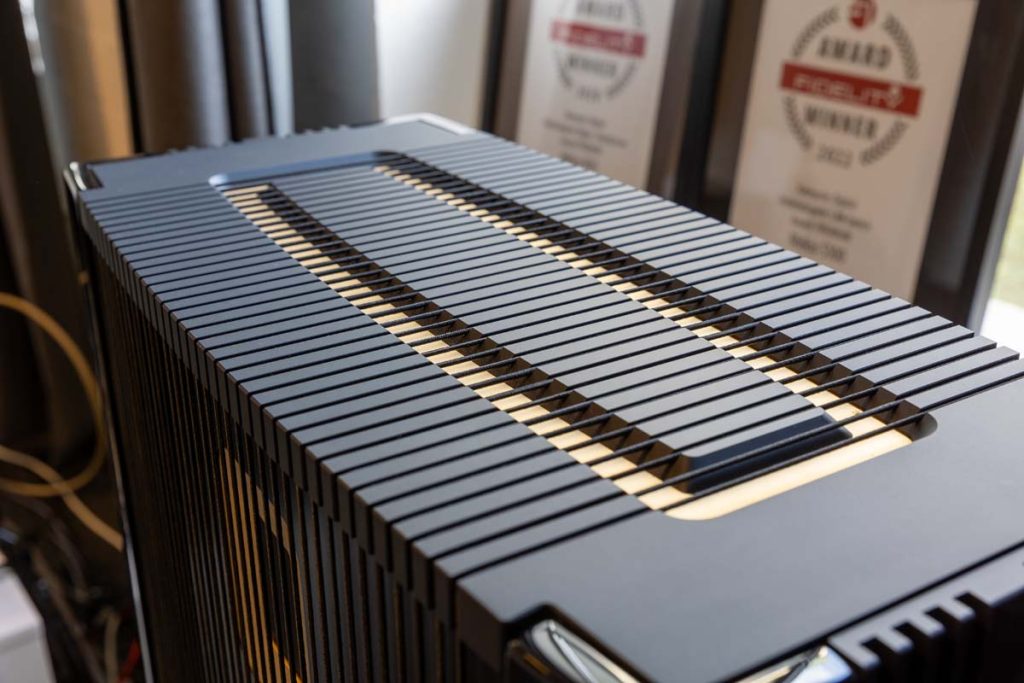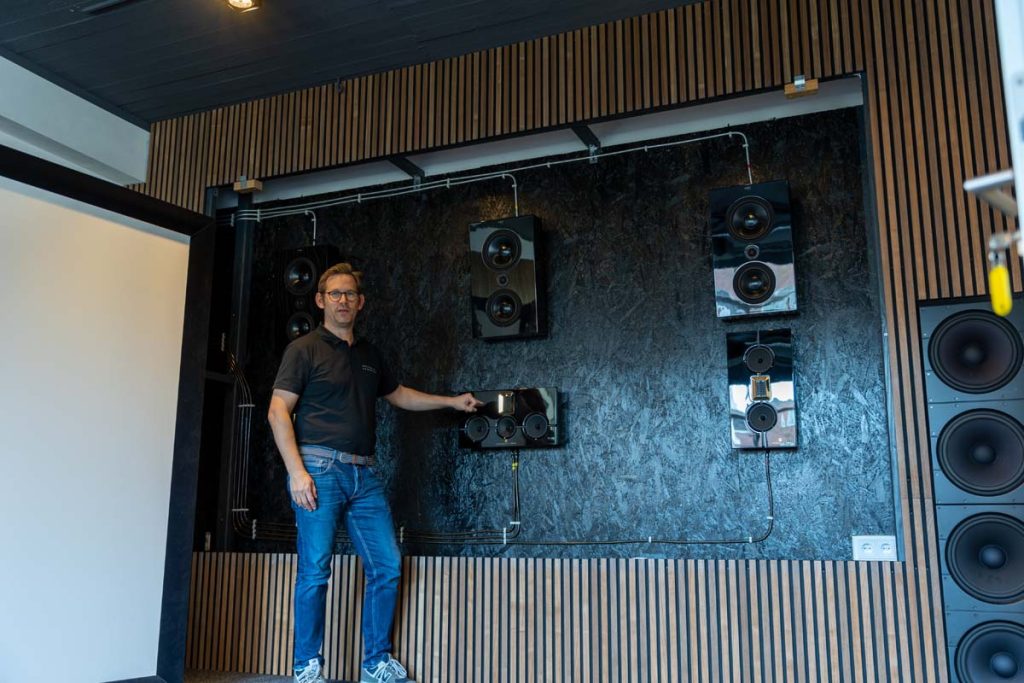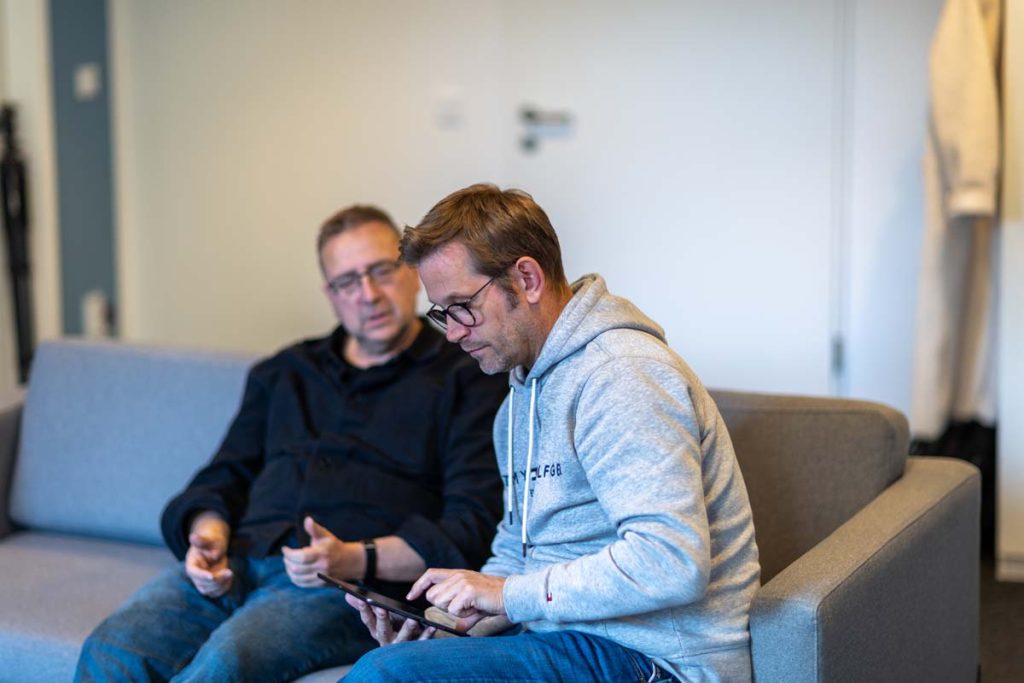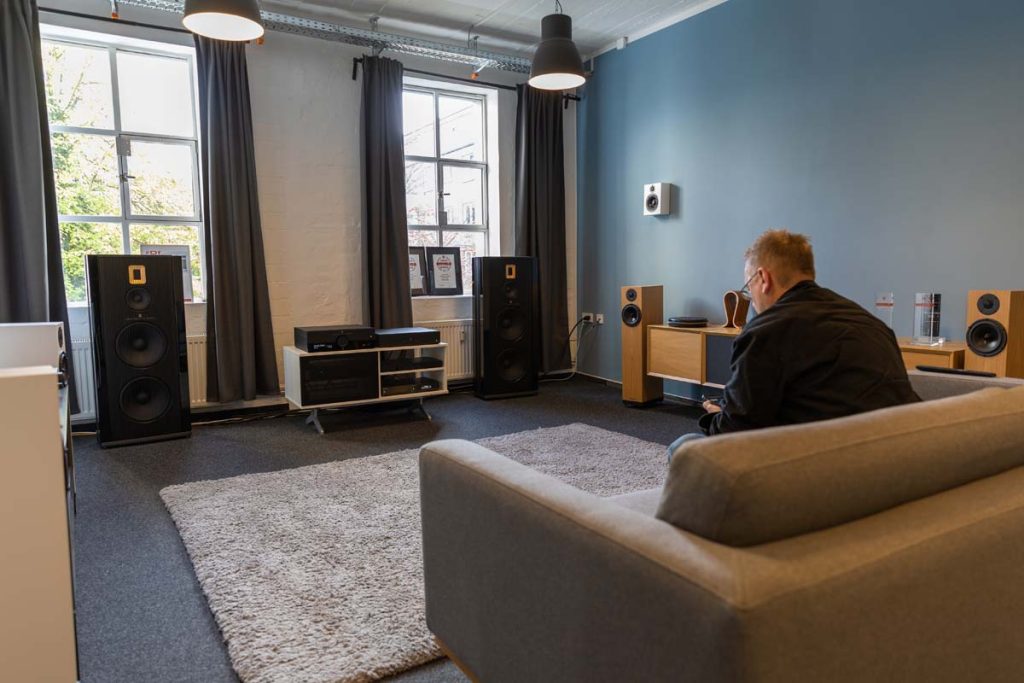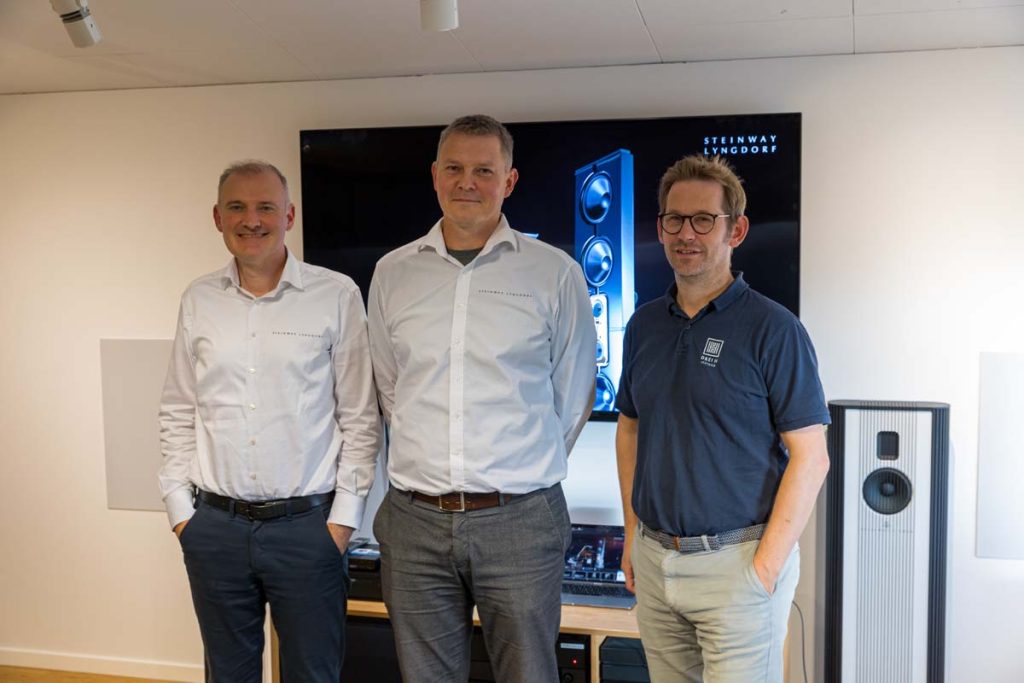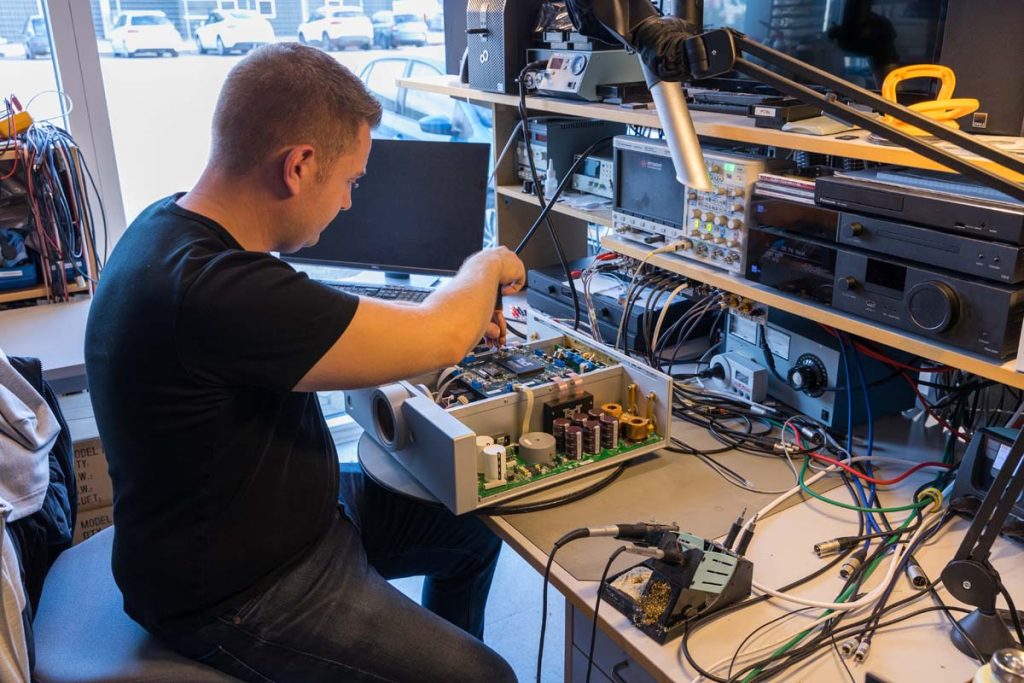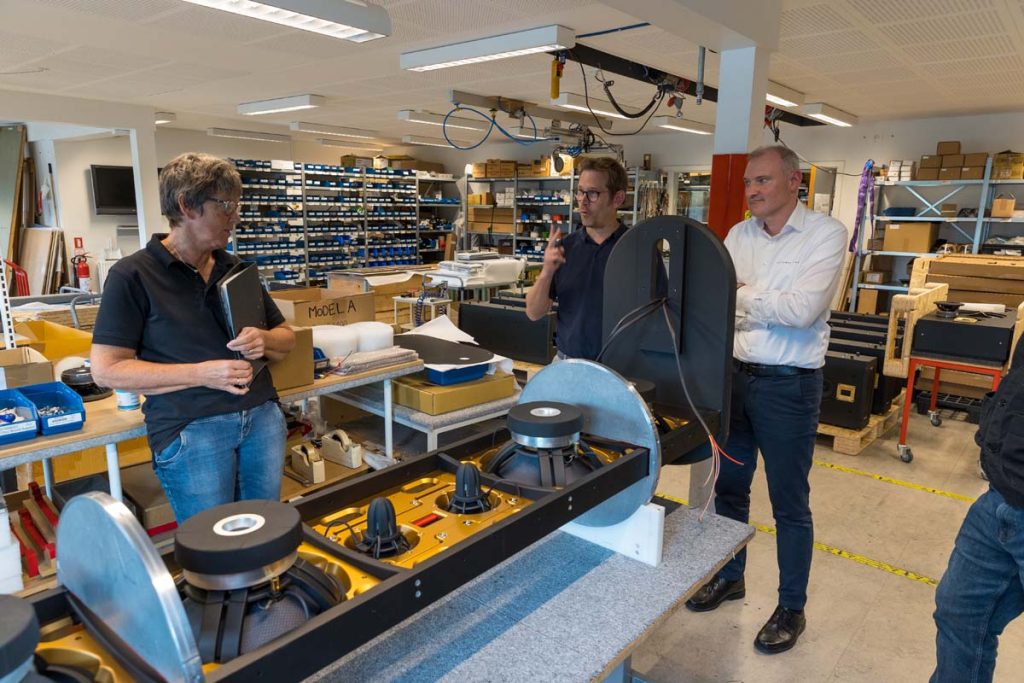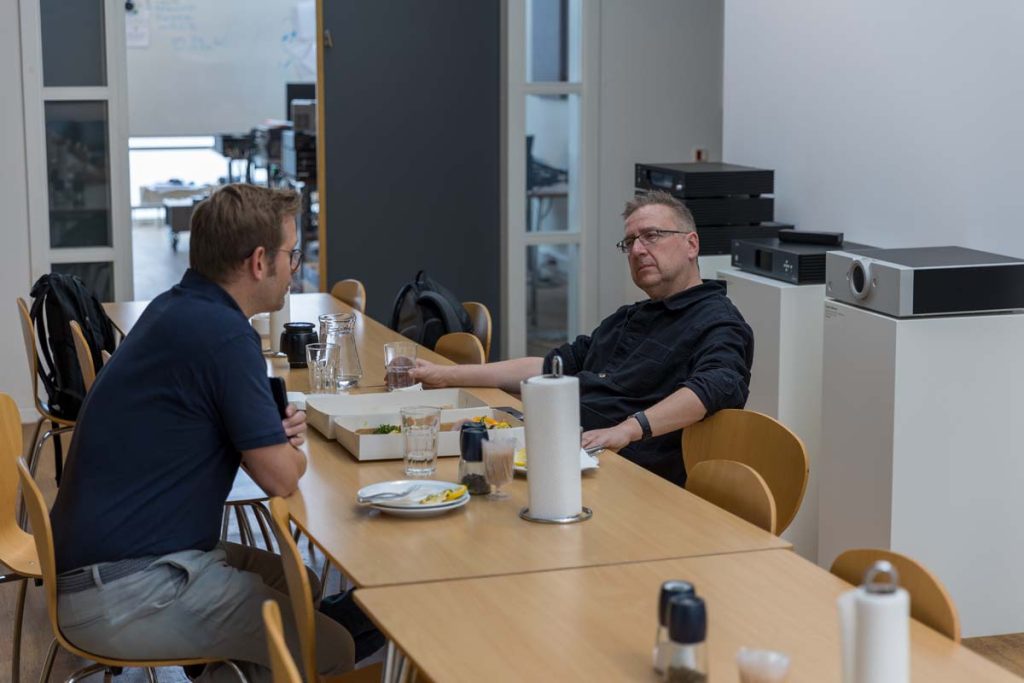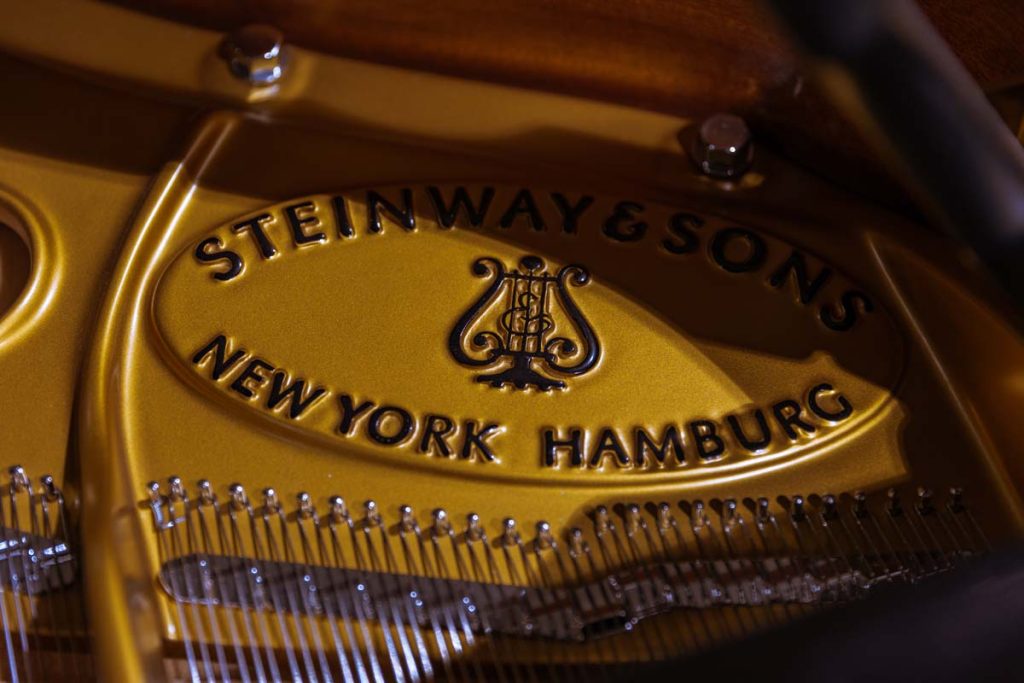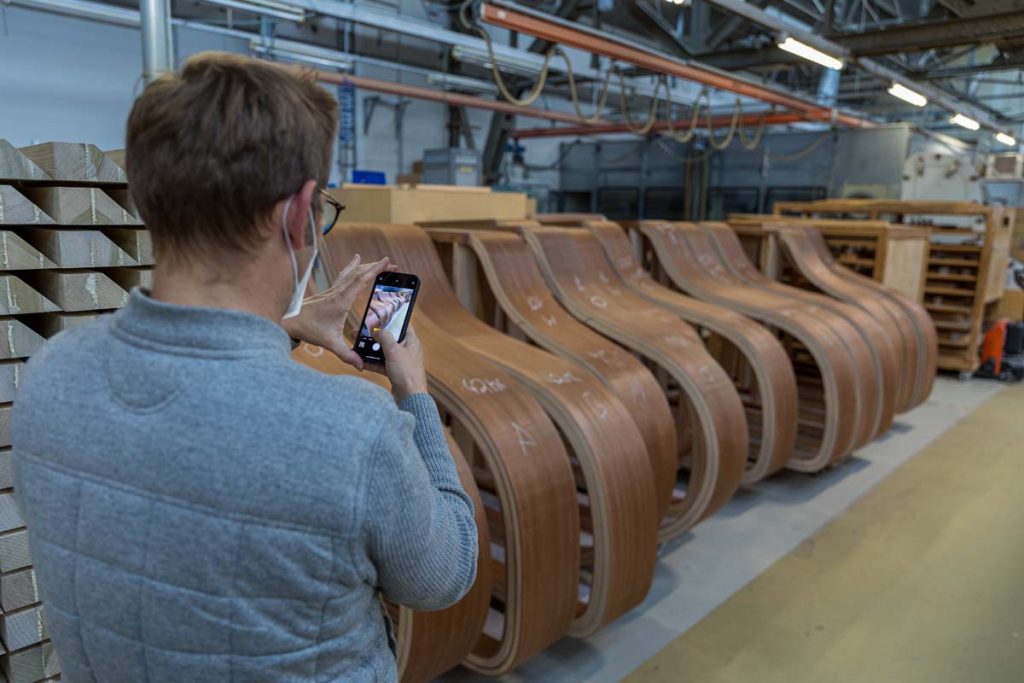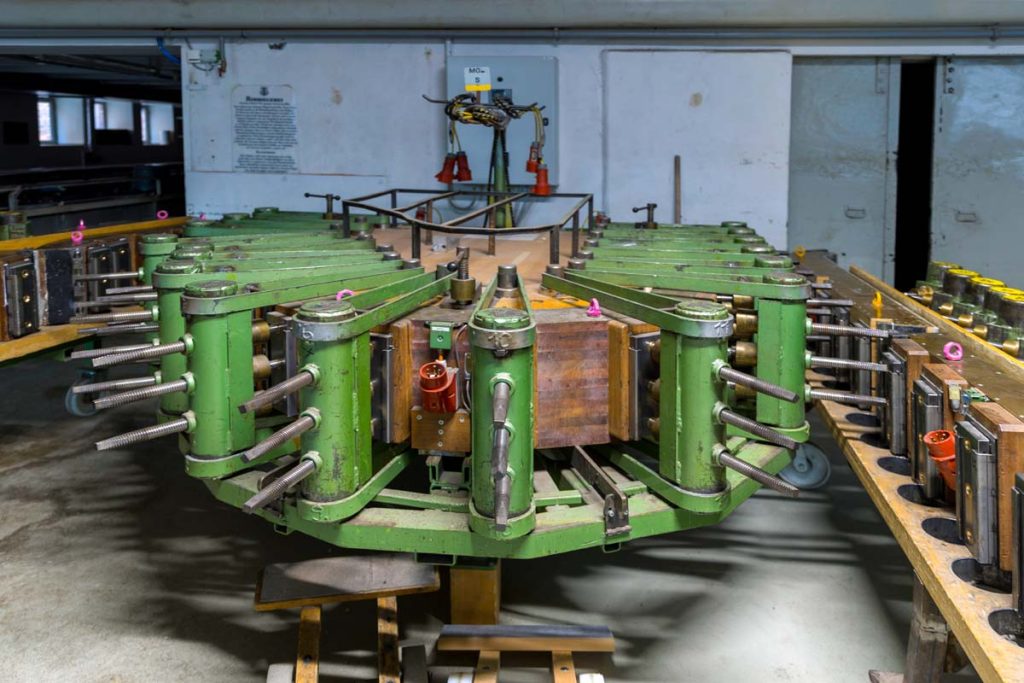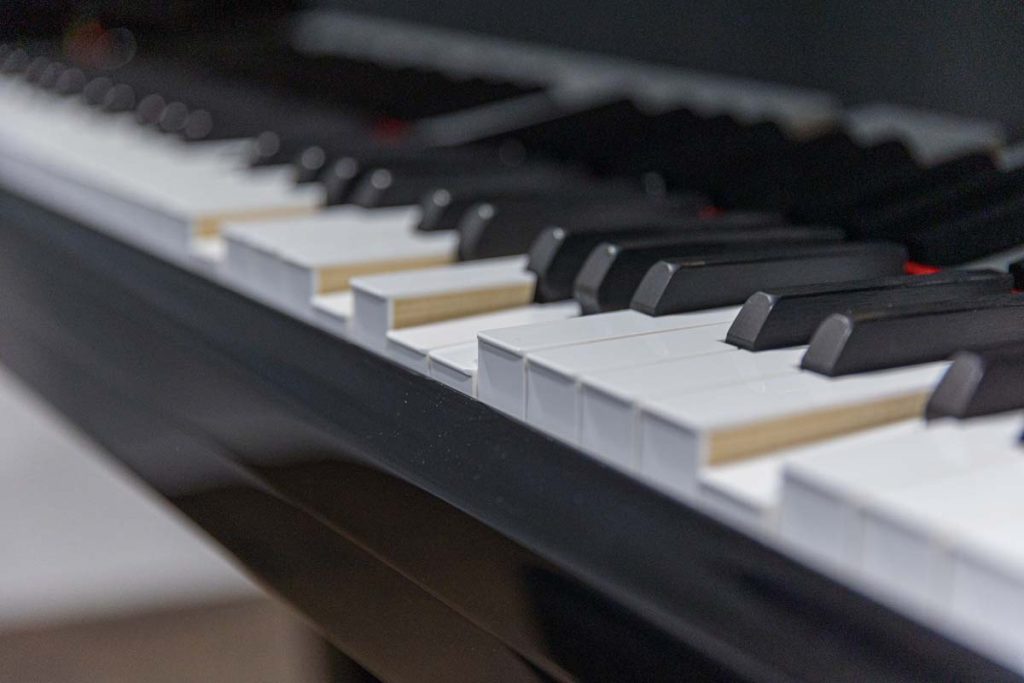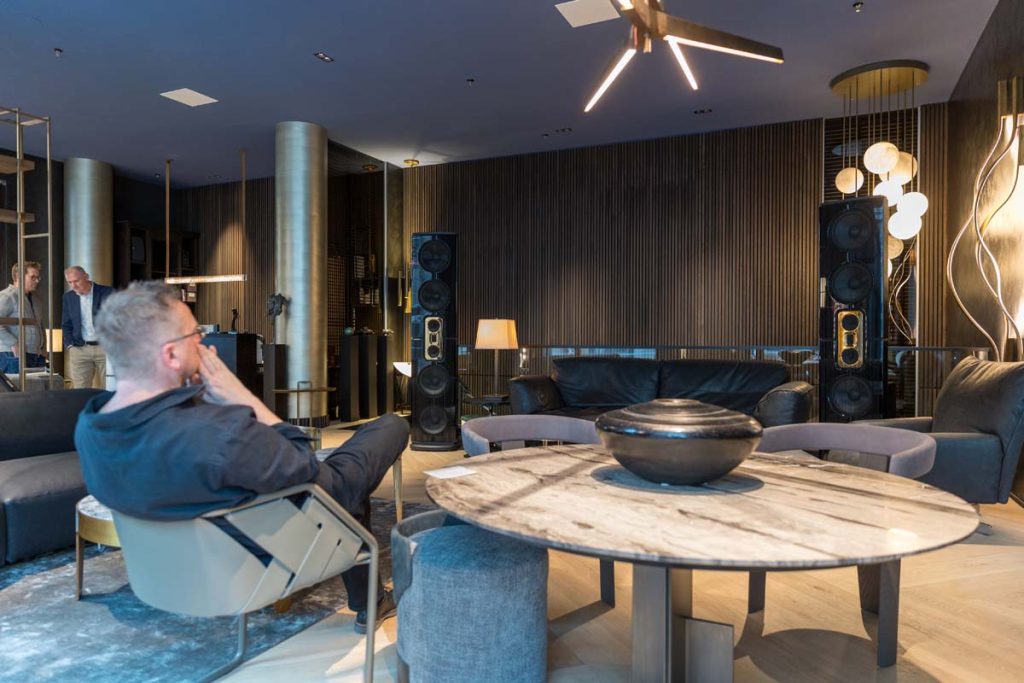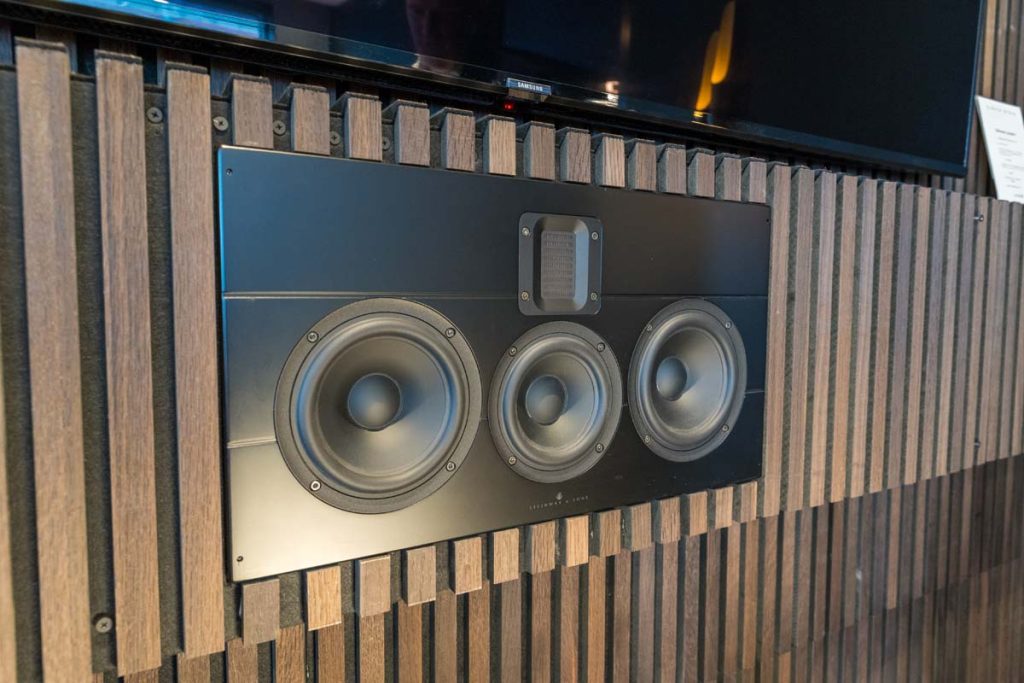Whether Glenn Gould or Vladimir Horowitz, Keith Jarrett or Lang Lang, in the past and present the most famous pianists were and are inseparably linked with the Steinway & Sons brand.
The global company, based in New York and Hamburg, has registered over 140 patents since 1857 and has since been regarded by many pianists as the ultimate solution. With the support of Peter Lyngdorf, the legendary piano manufacturer has also been making this claim in music reproduction for many years in the shape of the Steinway Lyngdorf hi-fi systems.
On the one hand, the huge success of this manufacture is due to the specific sound signature of clarity and transparency combined with an almost infinite attack dynamic. On the other hand, a grand piano from Steinway stands for a unique promise of quality, both in terms of playability and, above all, in terms of durability and qualitative consistency. So it is not surprising that there are pianists who simply refuse to play on another house’s grand piano in public or on recordings. An unbelievable achievement, considering how humble the beginnings of the company looked: the piano maker Heinrich Engelhard Steinweg made his first grand piano in 1836 – before he emigrated to the USA – in the kitchen of a home in the Harz region.
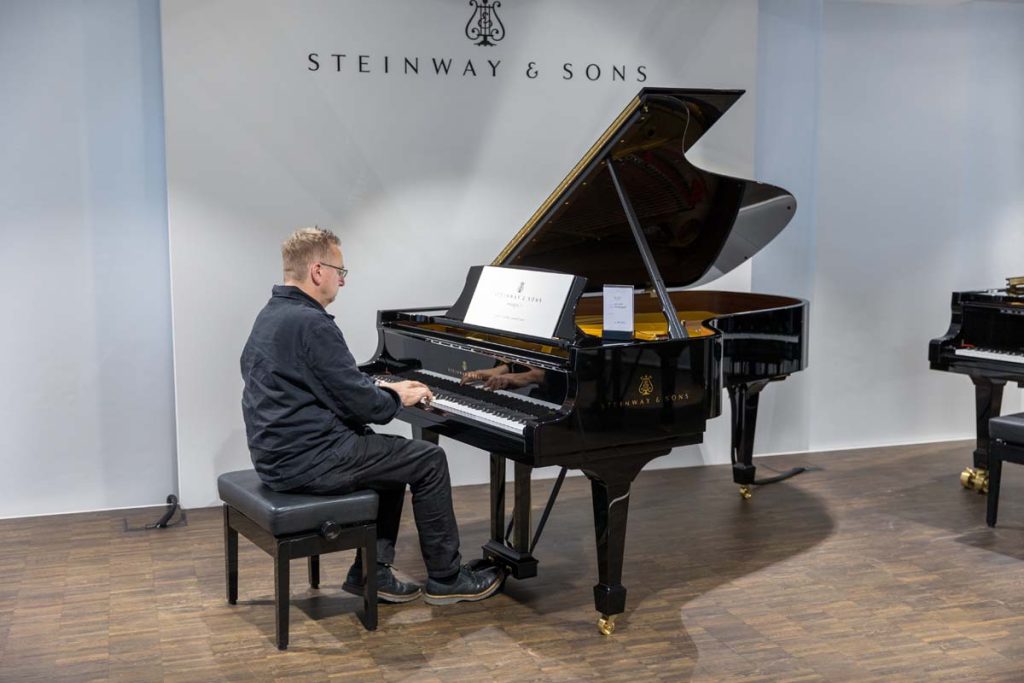
No, dear readers, you have not landed in the music section of FIDELITY, but are still in the equipment section of our magazine. Why have I given you a brief outline of the sound and value of Steinway’s grand pianos? Well, parallel to the piano manufacturer, the Steinway Lyngdorf company exists since 2008, which has developed its very own concept of technology and design for its clientele, which I would like to present here in detail.
In preliminary discussions with Mika Dauphin from the German sales department Drei H, it quickly became clear to us that we were dealing with an extremely individual approach. And so it came as no surprise that Mika Dauphin and Steinway Lyngdorf’s head of marketing Roland Hoffmann first took us to Ulrich Stein’s noble Hamburg outfitting house and then to the hallowed halls of Steinway & Sons in Hamburg for an exclusive tour of the company before we made our way to Skive in Denmark, Steinway Lyngdorf’s development and production site.
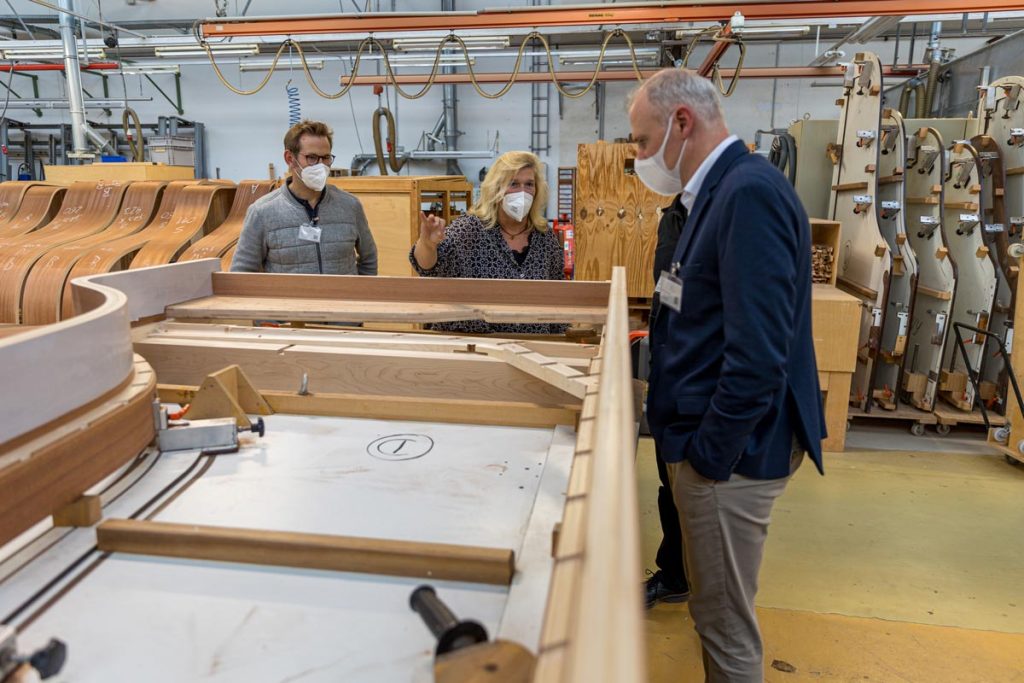
The beginning of a wonderful friendship
Legend has it that it was a bet between Peter Lyngdorf and the then CEO of Steinway & Sons in 2007 that marked the beginning of the company’s partnership. Audio mastermind Lyngdorf made an ambitious promise to develop a sound system capable of reproducing the sound of a Steinway & Sons grand piano so well that even experienced concert pianists would not be able to tell the difference. So Lyngdorf launched a year-long non-profit project to make good on its promise. The result was the active Model D, which apparently impressed listeners so much that Steinway & Sons gave the company exclusive rights to manufacture audio systems under the Steinway Lyngdorf brand name to develop a line of exclusive speakers, digital amplifiers and surround processors.
Two individualists – one concept
Let’s first take a look at the concrete cooperation between Steinway and Lyngdorf: The technical production takes place at Lyngdorf’s development and production site in Skive, Denmark. From the largest floorstanding loudspeaker to the smaller woofers, everything is handcrafted here, with a production period of up to five days estimated for the larger models. The high-gloss finish is then applied in true style at Steinway in Hamburg, so that a loudspeaker receives the identical high-gloss finish as a grand piano. Conversely, the showroom of the Hamburg flagship store is of course equipped with a discreetly integrated high-end system from Skive, so that demonstration videos, for example, can be shown at the sound level of the grand pianos on display.
The interaction with the new Spirio concert grand pianos, which can play back Steinway Artist concerts and recordings one-to-one via a digital library, is exciting, as Store Manager Claudia Kröger impressively presented to us. The installed loudspeakers will soon be able to add a second layer of music, for example from an accompanying orchestra and/or an instrumental soloist, which in combination with a self-playing Spirio grand piano and a Steinway-Lyngdorf system will then also make orchestral or chamber music performances possible. Against this background, the naming of the individual loudspeaker models can be explained, as these are taken exactly from the respective grand piano sizes: Thus, the legendary Model D concert grand piano, without which a Glenn Gould would never have lifted a finger, is the namesake for the largest speaker model. The grand piano models A, B or O, intended for smaller stages or for house concerts, then donate the names for the other speaker models accordingly.
It is important to know, however, that it is not possible to purchase individual pairs of loudspeakers, but always only an integrative package consisting of loudspeakers and amplifiers or processors. This is due to the fact that the ideal sound and the promise of quality that Steinway is aiming for can only be achieved with this combination of loudspeakers and electronics. And while we had the production facilities in Hamburg and Skive shown to us in detail over two days, we quickly got the impression that two companies with similar thinking in their perfectionism have found each other here.
IT’S NOT CLASS D – IT’S DIGITAL
Lyngdorf’s amplifiers, also found in a modified form in any Steinway-Lyngdorf setup, do not amplify at all by conventional definition. They are digital-to-analog converters with sufficient power (current and voltage) to drive speakers directly, eliminating hundreds of active and passive components that are a major source of noise and distortion. To reduce the volume, simply reduce the output voltage of the power supply. This means that the volume control contains no active circuitry, making it a simple but ideal method of volume control. The “tipping points” of a conventional volume control, where the signal abruptly becomes too quiet or too loud, are eliminated with this control via the output voltage of the power supply.
A slightly different target audience
As a technology-savvy highbrow, it’s easy to forget that beyond the bubble there are a myriad of music-loving people who regularly visit the Elbe or the Isar Philharmonic, but have never set foot in a hi-fi store in their lives – and who also don’t want to deal with the differences between silver and copper cables or the advantages and disadvantages of a tube amplifier. They are also completely unfamiliar with the idea that a room should be set up for the optimal conditions of a music system. One would never think of presenting a huge analog drive or monstrous mono power amplifiers as living room altars. One would like to call a high-quality music system one’s own, which integrates itself discreetly to invisibly into the room and works reliably, without renouncing an audiophile claim. Which, in addition to the sound aspects, brings us to the point of value. This target group is naturally looking for a brand that can be trusted, that has an impeccable reputation and that is associated with a high-quality musical experience; and that’s where Steinway & Sons comes into play. It is not uncommon for these music lovers to have both a grand piano and a music system with the Steinway brand name in their home.
Technology, design, space – an equilateral triangle
The subwoofers provide an apt example of how technology and aesthetics are intertwined at Steinway Lyngdorf. The term “subwoofer” is actually a misnomer, since in most systems the separation from the speakers already occurs between 200 Hertz and 300 Hertz, which is why Steinway Lyngdorf prefers to speak of “boundary woofers”. The functional principle is that the membrane is directed against the wall in order to achieve an even room distribution via the reflection; at the same time, the technical appearance is turned out of focus and the noble lacquered rear side comes into the optical focus. In Ulrich Stein’s furniture store, the woofers appeared more like a home accessory than a technical device and were hardly noticeable visually below the integrated Model M in-wall speakers in an unusual 3.2 setup. In the midst of a cozy living landscape, the unusual setup sounded quite outstanding, even Kraftwerk could effortlessly flood the room, one was bathed in music, so to speak.
THE MOTHER OF ALL ROOM CORRECTIONS
The RoomPerfect correction system developed by Peter Lyngdorf is characterized above all by the fact that it attempts to compensate for the inadequacies of the room on the one hand, but on the other hand to retain the typical characteristics of the loudspeaker. For this purpose, a multi-step measurement procedure is necessary, which, however, can also be mastered by laymen. The first step is the so-called focus loudspeaker measurement: The first calibration at the main listening position points the microphone directly at the front loudspeakers. With the help of a specially developed measurement tone, the loudspeakers are measured with minimal influence from the room. By capturing this direct measurement of the loudspeakers, RoomPerfect prevents any sonic alteration of the loudspeaker characteristics. This is followed by the room measurements. Since the acoustic errors caused by a room are a complex three-dimensional problem, they can only be fully captured if the entire room is measured in three dimensions. To do this, the microphone must be placed over the entire height, width and length of the room, not just around the main seat. RoomPerfect is tailor-made for Steinway Lyngdorf’s concept, as the listening position can also be located far outside the actual room- and set-up-related sweet spot. For normal operation, there are three settings to choose from in the in-house app: “Focus” for the best performance on the main listening position, “Global” for the best performance in a wider listening area, and “Bypass” for comparison without any correction. Advanced users can additionally set and save various “voicings” independently; there are practically no limits to the acoustic play instinct here.
The promise of sound quality
We were particularly curious about the Model D, the starting point of that legendary bet at the beginning of the collaboration. The setup is still being built today and has been further developed primarily in terms of the electronics used, which ensure that the difficult basic concept of the speakers works so well. In order to reproduce the sound and especially the dynamics of a Steinway Model D grand piano almost one-to-one, Peter Lyngdorf had to virtually square the circle. In his conception, resolution and transparency could only be achieved with an open dipole concept, which, as is well known, can be weak in the bass range as well as in tonal tuning. This is where Lyngdorf’s specific amplifier electronics come in, which on the one hand actively drives the bass range, but also gives the other drivers enough power. If the RoomPerfect room correction system is added, the point is reached where even Steinway’s grand piano builders can hardly distinguish the reproduction from the original. The large showrooms at Ulrich Stein were of course far from a perfect listening room. And yet: calibrated to the point, an incredible orchestral panorama with Saint-Saens’ Danse Macabre developed before our ears. In one fell swoop, it became clear what Steinway Lyngdorf’s statement means: it is not the listener who must adapt his room to the system, but the system must come to the listener and adapt to his needs. For the customer, of course, this also means that the appropriate model selection, the measurement and also the installation in the home walls are carried out by certified dealers, not infrequently in consultation with architects. The price range is therefore always dependent on individual needs and starts for a complete system of speakers and amplifiers at 34 750 euros.
Model A – the sights set on the high-ender
Our road trip was a bit more classic in the rooms of the German distributor Drei H, where we took a seat in an acoustically optimized room in the familiar stereo triangle to take a closer look at the Model A, the latest development: The proprietary AMT tweeter and 6.5-inch midrange are paired with two powerful 12-inch woofers. Despite the very flat enclosed cabinet design, the diameter of the two woofers allows for almost infinite dynamics in the bass range. During the live recording of Beyoncé’s “Partition”, the speaker almost gained PA qualities, so precise and powerful did the electronic bass gradually move deeper and deeper into the cellar – and thrilled with a clearly defined decay behavior that neither limp covered the overall sound nor hastily withdrew from the musical action.
Equally impressive were the qualities on the opposite side of the listening spectrum. How the mono mix of John Coltrane’s Blue Train was able to spread its groove even at subdued room volume and how even the finest details in the musicians’ interplay remained audible is a testament to the perfect adaptation of the four-channel A2 power amplifier used, with its 400 watts per channel, to the needs of the loudspeakers and the precise use of RoomPerfect. With this almost conventional loudspeaker/amplifier combination, it is certainly possible to reach the classic high-ender, who is looking for loudspeakers with a superior build quality, a timeless dignified design and an uncompromising sound. However, he must be aware that the Model A is only available in combination with the in-house electronics. But perhaps that is also the incentive for purchasing the complete system, if after restless years of searching, experimenting and exchanging, one simply wants to listen to music with the certainty that one has finally arrived. Just as for pianists a Steinway & Sons grand piano leaves nothing to be desired, for a music lover the Steinway Lyngdorf Model A can be the reassuring visual and technical end to the long audiophile journey.
More than just stereo
You want to set up a home theater with Dolby Atmos, you are looking for the ultimate gaming experience in surround mode, you want to sound your outdoor pool or your yacht? No problem at all. The principle of Customer Installation already takes up over 50 percent of Steinway Lyngdorf’s business outside Germany. Take heart! After we were able to join George Clooney and Sandra Bullock on their Gravity spacewalks thanks to Steinway Lyngdorf and Dolby Atmos, my colleague Barnbeck and I were already dreaming of commissioning interior designers to redesign our listening rooms with multi-channel systems on the way back. The emergency stop at the end of the traffic jam in front of the Hamburg Elbtunnel quickly tore us back to reality, though. A shame, really …
Complete HiFi System
Steinway & Sons Model A
Concept: Complete stereo system with room calibration | Tweeter: air-motion transformer, Kapton foil, neodymium magnet | Midrange driver: 165 mm anodized aluminum cone, vented magnet with copper-clad pole piece, dual layer 35 mm voice coil, formed aluminum basket | Woofer: 2 x 30 cm anodized aluminium cone, vented double magnet with copper ring, four layer 75 mm voice coil, formed aluminium basket | Enclosure: sealed box, material aluminum and MDF, steel base | Frequency response (-3 dB): 25 Hz to 22 kHz | Amplification: A1 or A2 amplifier, 2 x 400 W per speaker, 2 amplifier channels per speaker | Max SPL @ 1 m: 114 dB | Crossover woofer/midrange: digital crossover stored in processor, 200 Hz | Crossover midrange/tweeter: passive crossover, 2200 Hz | Connectors: Neutrik Speakon | Finish: black piano lacquer finish, special finishes possible | Dimensions (W/H/D): 50/115/27 cm (incl. base) | Weight: 76 kg | Warranty period: 5 years | Price: from 73 480 €
DREI H Vertriebs GmbH
Kedenburgstraße 44/House D
22041 Hamburg
Phone +49 40 37507515
info@3-h.de

